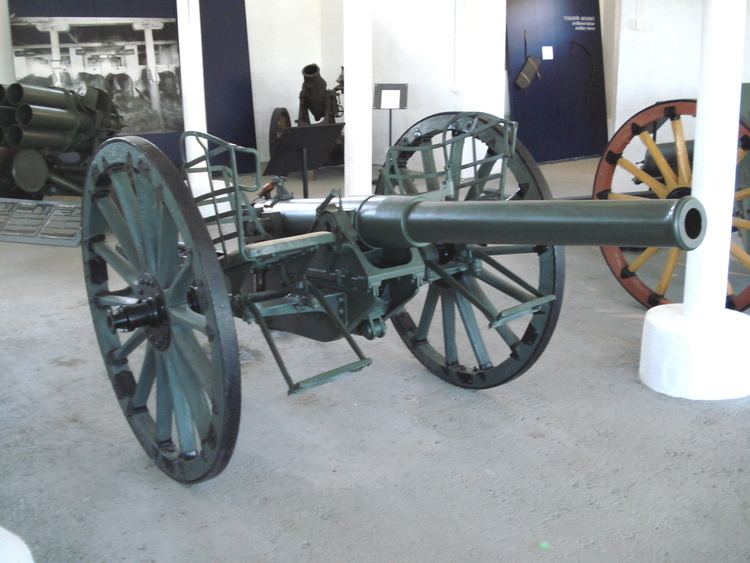Type Field gun Produced 1900 - 1903 | Number built ~ 2300 | |
 | ||
Wars Boxer RebellionRusso-Japanese WarWorld War IRussian Civil War Weight combat: ca. 1,000 kg(2,200 lbs) | ||
The 76 mm gun model 1900 (Russian: 76-мм пушка образца 1900 года), also called 76 mm Putilov M1900 gun, was a light quick-firing field gun of the Imperial Russian Army used in the Russo-Japanese War, World War I, Russian Civil War and a number of interwar armed conflicts with participants from the former Russian Empire (Soviet Union, Poland and Finland).
Contents
History
The M1900 has been developed in 1900 by engineers of the Putilov Plants. Since 1898 the Imperial Russian Army was looking for a new field-gun and Krupp, Shamona and Schneider sent in their designs. The decision was made in favor for the M1900 and it became the first Russian gun with a recoil system and at the same time the first Russian 76.2-millimetre field gun.
The guns were manufactured in the St. Petersburg Plants.
Employment
The M1900 saw first action in the Russo-Japanese War and was superior to its Japanese counterpart, the Type 31 75 mm Field Gun and in particular the Type 31 75 mm Mountain Gun, in regards of rate of fire and range. The Japanese knew about this disadvantage and compensated this with numerical superiority.
The gun saw further deployment during World War I. Though technically obsolete a number of M1900, however, appeared in the first part of the war to replace heavy losses the Russian Army suffered in the opening battles of 1914, but as soon as the successor of the M1900, the 76 mm divisional gun M1902, were available, they were withdrawn.
In the Russian Civil War in 1917/18 the M1900 were used by both parties.
Soon after the new Red Army sold or handed over some of the M1900 to some of the new Baltic States and such nations under Soviet influence such as Finland. Poland also received some of the guns and converted the original 76.2-mm (3-in) to 75-mm (2.95-in) calibre to match their existing artillery which consisted of French-made Canon de 75.
In 1918 there was a total of 21 76 mm gun M1900-pieces in Finland.
Specifications
The gun has an upper and a lower gun-carriage. The upper gun-carriage slides, resting on grooves along the rail of the lower gun-carriage. In the trail is an oil buffer, acting as a recoil brake, which includes 40 india-rubber doughnuts which were compressed when the gun was fired. After the recoil stroke the doughnuts expanded again and the barrel returned into firing position.
The barrel is reinforced with a thermal sleeve.
The breech-block equipped with a so-called French turn breech-block with a turn bar, the first one on a Russian gun. The recoil system of the gun did not turn out to be sufficiently effective and that is why the number of manufactured guns remained low.
